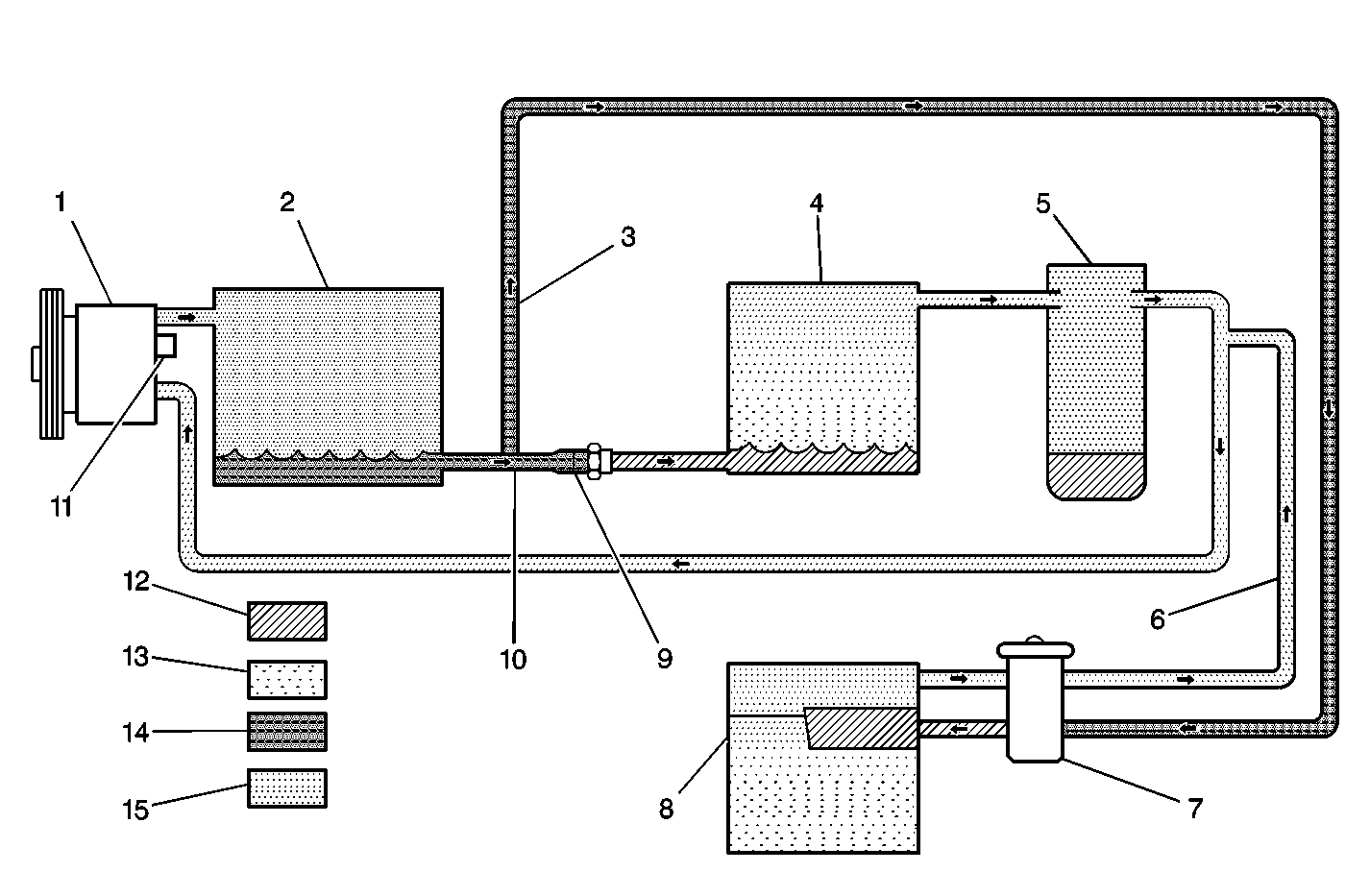Heater, Ventilation and Air Conditioning System Operation
The A/C system provides the following features:
| • | Cooled or dehumidified air for the comfort of the occupants |
During most operating conditions, outside air enters the vehicle in
the following manners:
| • | The blower motor pulls in outside air through the heater and air
conditioning modules. |
| • | The forward movement of the vehicle forces in outside air. |
Air is pushed by the blower motor, along the following path:
- Through the evaporator core
- Through the heater core
- Into the passenger compartment
If the ambient temperature is above 7°C (45°F), the refrigeration
system will chill the evaporator to almost freezing. This action permits
the operation of the following components:
As the air passes through the evaporator, the air temperature drops.
Air moisture condenses on the evaporator core fins. A gravity feed through
a drain hole removes the moisture from the vehicle. This action
dehumidifies the air.
From the evaporator, some or all of the air may pass through the heater
core. If the system is in the heating mode, the engine coolant warms the air.
Any of the air which is not to be heated will mix with the heated air
before entering the passenger compartment.
If the user selects the maximum air conditioning mode, most of the air
that enters the blower motor is from the passenger compartment (recirculated).
The air from the passenger compartment is usually cooler than the outside
air. The other modes use outside air.
Side Window Defogging
Air is supplied to the side window defogger outlets in all modes except
the following modes:
The side window defogger outlets are located at both ends of the instrument
panel.
Auxiliary Heater (C36)
An auxiliary heating option is available for vehicles sold in Canada.
The auxiliary heating option includes a separate blower module which houses
the following components:
This auxiliary heating option is standard equipment on all Canadian
vehicles that are equipped with third-row seating. The auxiliary heater provides
an increased level of comfort for passengers in the rear of the vehicle.
Major components of the auxiliary heating system include:
| • | Additional underhood heater hoses/pipes |
| • | Auxiliary heater water shutoff valve |
| • | Front-to-rear heater hoses/pipes |
| • | Rear fan-master control |
| • | Rear fan-temperature control |
| • | Heater A/C module which consists of the following components: |
| - | The blower motor resistor |
| - | The rear temperature valve electric actuator |
| - | The heater outlet hoses |
Rear Air Conditioning (C34)


